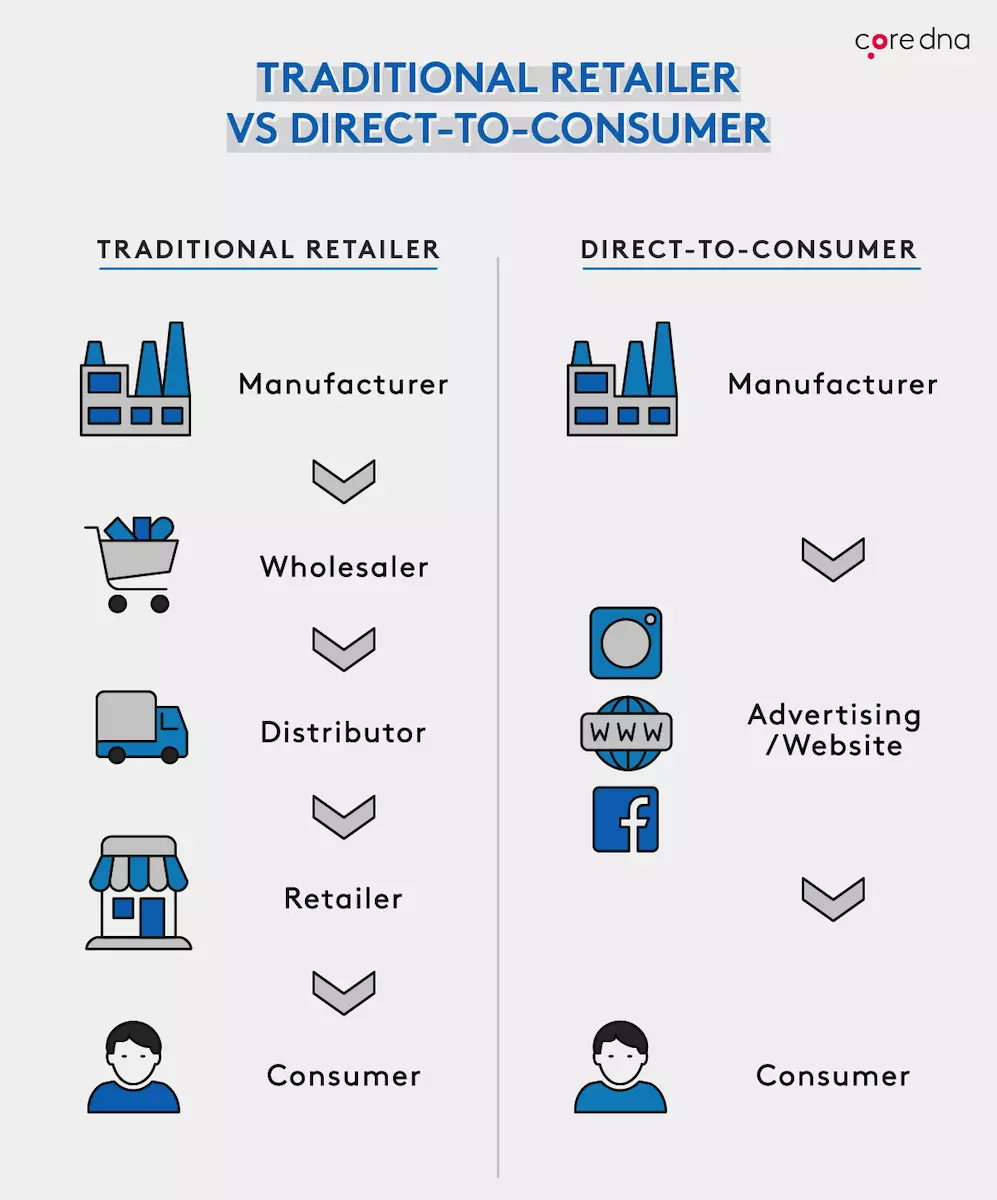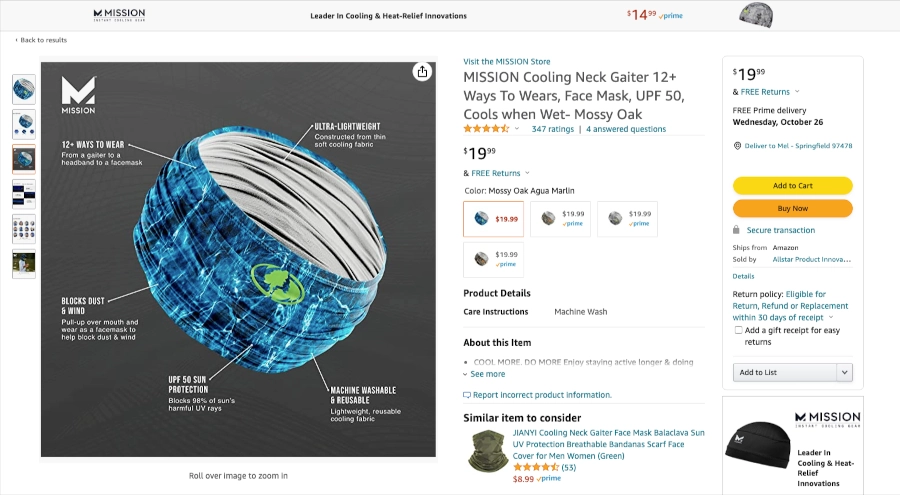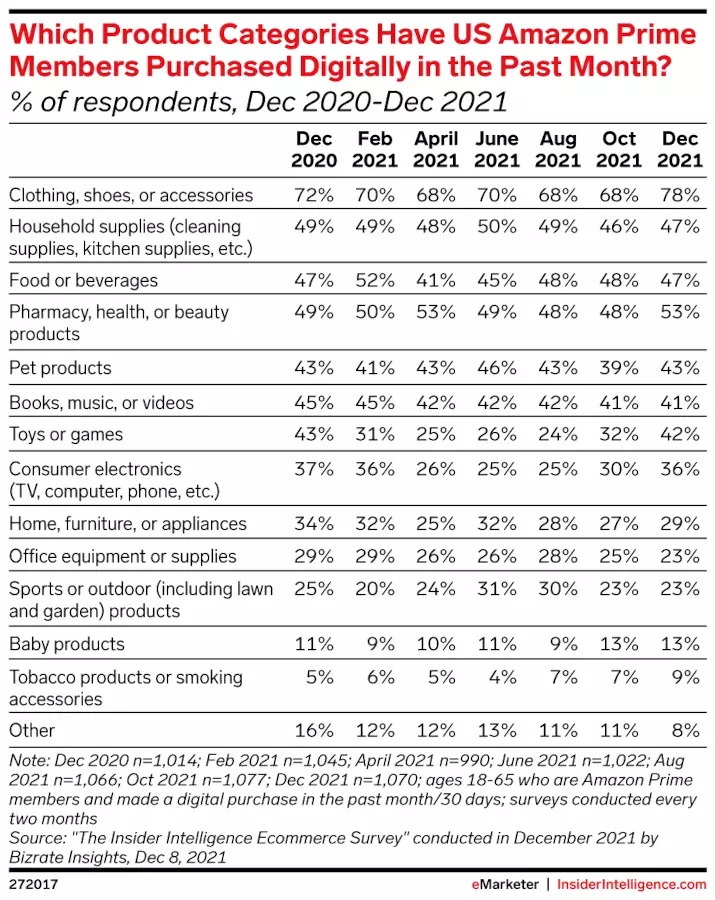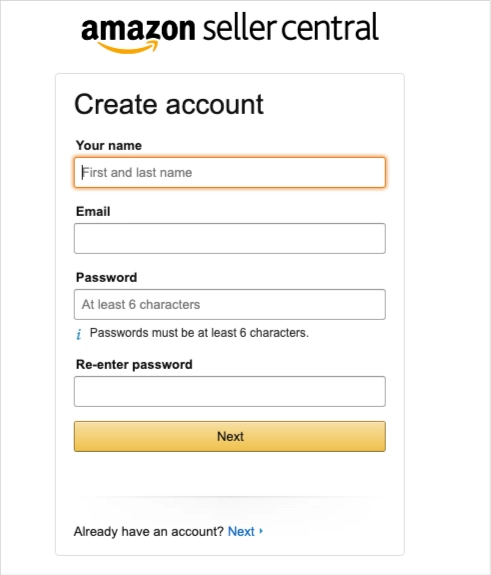Reading Time: 19 Minutes
Amazon is quickly becoming a destination for direct-to-consumer (DTC) brands looking to expand their reach and increase their sales. As the leading eCommerce shop, Amazon actively supports DTC brands that wish to join their network.
“Since third-party sellers joined Amazon in 1999, they’ve grown to account for 58% of Amazon sales”
– Amazon
As you consider whether or not selling on Amazon is right for you, it can be helpful to think of Amazon as an online shopping mall. You can access a massive crowd of online shoppers, but like setting up a mall store, there are also some “hoops to jump through.” Here’s how it all works.
In a DTC arrangement, the producer is the distributor, marketer, and seller. When you create a product, you engage the consumer directly, fulfill product orders, and provide customer service to that consumer.

DTC brands typically enjoy lower costs over traditional retailers that partner with a handful of third-party vendors to sell products to customers.
For example, Walmart is a distributor because it buys products directly from wholesalers and manufacturers. The product creators don’t sell to consumers – they sell to Walmart, which then sells to consumers. As the chart above demonstrates, non-DTC businesses manage as many as three to four “middleman” agencies before consumers buy products.
Amazon has developed an impressive system allowing distributors and DTC brands to sell on its platform.
Amazon allows retail brands – including distributors, drop-shippers, and DTC companies – to create an online store on the most popular ecommerce platform in the world.
The Amazon sales model accommodates hobbyists and large-scale retailers. Individual accounts favor low-volume sales, while the Professional account helps businesses grow their reach online. For your DTC brand, you will most likely want a Professional Amazon Seller account.

Mission’s motto is “Cool More. Do More.” This DTC brand supplies cooling apparel for those living active lifestyles. Boasting propriety “MISSION instant cooling technology,” the founders partnered with Serena Williams, Dwayne Wade, and Drew Brees to develop and test premium cooling apparel and accessories.
The company expanded quickly after mask use became more widespread in the United States. Customers purchased and used Mission’s classic blue neck gaiter that was able to double as a mask for the outdoors.

Image via Amazon
When experts revealed that dual-layer masks did a better job of slowing the spread of COVID-19, Mission launched its own version of the triple-layer mask. Combined with its cooling technology, Mission delivered a mask that kept athletes safe from sickness and overheating.
In addition to a robust online store, Mission is a Prime Seller on Amazon and averages a 4.5-star rating across its entire product line. Mission also enjoys the Best Seller badge on several products.
After selecting a Professional Seller Account, you have the option to upgrade your account and become a Prime Seller after three months. To qualify for Prime, you must meet the following criteria:
If you meet those minimum requirements, you can apply to become a Prime Seller. You can choose to fulfill your own orders (SFP) or utilize Amazon fulfillment (FBA) instead.
If you have an efficient system for processing orders and shipping them in a timely manner, you can save money by enrolling in Seller Fulfilled Prime (SFP). To be a SFP member, you must ensure that products reach buyers in two days or less.
Due to the number of candidates applying for SFP, you are likely to go on a waiting list. Once conditionally approved, you complete a trial period (duration of trial period varies) before receiving the official Prime Seller designation on Amazon.
If you’d rather depend on Amazon to fulfill two-day and overnight shipping requirements, you can opt for Fulfillment by Amazon (FBA). With FBA, there is no trial period and no waiting list.
After posting a product, you send the product to an Amazon distribution center. When the product sells, Amazon takes care of the rest.
The catch with FBA is that you pay for storage, and you pay Amazon to handle shipping for you. That said, FBA is great for becoming a Prime Seller right away and it saves you from having to fulfill product on Amazon sales.

Image via Amazon
Let’s be honest – no other online store competes with Amazon. Furthermore, Amazon Prime Day sets holiday sales records and beats its own record yearly.
Expanding your online store onto Amazon allows you to get a piece of the Amazon pie, including participating in Amazon Prime and Prime Day sales.
Amazon buyers may not have heard of you before buying from you. But because you sell on Amazon and have public reviews, consumers are more likely to trust you sooner than if they happened upon you in a sponsored post on social media.
Your Amazon store also acts as another touch point with members of your audience. Simply put, selling products on Amazon helps you get seen more often.
It can be hard for customers if they saw your sponsored ad, influencer post, or other advertisement and decided later that they want to buy. They may or not remember your brand name to be able to search for you on Google.
But all Amazon product pages are searchable. Customers can find you easily and are less likely to forget your name after doing so. Buyers also have records of their favorite purchases and can extend the lifetime value of your customers.
Just as there are major benefits to selling on Amazon, DTC brands have also encountered difficulties.
Deceptive sellers can copy photos and post disingenuous product descriptions that confuse customers about which is the right brand for them. That said, becoming a Prime Seller with high customer reviews can protect you from these copycats in most cases.
If you sell a trademark, copyright, or legally-protected product, you may report an infringement to Amazon so that Amazon can take disciplinary action on your behalf.
Amazon’s business model is unashamedly customer-centric. Many DTC brands report pressure to continually sell at lower prices, run large discounts, or pay more in shipping costs to deliver sooner.
If you sell at a small margin on Amazon, you may run into cash flow issues. Many customers will buy from you on Amazon before they buy from your website. You can manage this disadvantage by paying close attention to your margins, lowering your production costs when possible, and sticking firmly to product price points.
The reality is that Amazon owns the customer relationships, even if those customers buy from you. Amazon works hard to maintain those relationships. So in the event of a customer dispute, Amazon will most likely side with the customer.
Getting customer care pressure from two directions can place greater stress on your fulfillment and return/refund teams. In contrast, customers nurtured on your other channels deal directly with you, and you have more flexibility when resolving disputes and satisfying the customer.
If you are seriously considering selling on Amazon, there are a few things you should think about. You will likely see a boost in sales and greater brand awareness. But fast growth presents new challenges. Additionally, the Amazon Marketplace works differently than your ecommerce store.
Product demand and competition can impact your performance on Amazon. It may be helpful to search for competitors on Amazon and note customer reviews.
Reviews don’t just tell you whether customers like or dislike a particular product; these reviews can also tell you how popular certain products are.

You can also get a sense of product demand by how many sellers in your category are sold out or unable to fulfill product in a timely manner. These factors indicate that there is not enough supply, and your product may perform well from the start.
When you sell on multiple platforms, you need to keep a close eye on inventory. Overcommitting to buyers can seriously affect your brand image and customer goodwill. Too many negative reviews on Amazon can hurt brand sentiment on and off the platform.
After setting up your Amazon Store, set product limits carefully and think about the sales volume that your product fulfillment team can handle.
Amazon Prime members feel especially entitled to two-day shipping or less. Regardless of whether you are a Prime Seller, Amazon shoppers have high expectations for receiving their orders quickly.
If you cannot ship product quickly, you may risk bad reviews. Since customer expectations for faster shipping are rising across the entire eCommerce industry, selling on Amazon may be just the accountability you need to streamline your fulfillment process for Amazon and non-Amazon orders alike.
If you want to become a Prime Seller, establishing your brand on Amazon in the first three months is a big deal. The faster that you can ship product and collect high customer reviews, the better your future on Amazon will be.
Each step you take to establish yourself should be decisive and determined if you want to have a long-term relationship with Amazon. They will place high customer-centric standards on your DTC business. If you’re prepared, you will do well and grow your brand.
But some DTC brands “dip their toe” into Amazon and feature only a few products at a time. Their goal is to find out if selling on Amazon is in their best interest. After they grow more comfortable with how Amazon works, then they may adjust their strategy and sell more rigorously.
Knowing your long-term goals with Amazon can help you take the best approach. There is no right or wrong way unless you fail to satisfy Amazon customers. Careful planning can help you grow your business on Amazon, as well as on your owned media channels.
Getting started with Amazon is fairly simple. After taking the considerations listed above into account, you are ready to begin. The first step is to take a look at your current store to see what adjustments you might need to make before you begin selling on Amazon.
The requirements to become an Amazon seller are not high. All you really need is payment, tax, and direct deposit information. Specifically, you’ll need:
When you first sign up, you’ll choose between an Individual or Professional seller account. If you’re already an established DTC business, you should plan to pay $39.99 each month, regardless of your sales volume.
If you prefer to select the Individual account, the cost is $.99 per sale. If you sell more than 40 items each month, the Professional subscription makes more sense.
Registering your Amazon Store is as easy as creating an Amazon Prime account. You will provide a name, email address, and password to begin.

Your seller dashboard is known as Amazon Seller Central. From this interface, you will manage your products, payments, orders, and performance metrics.

From Seller Central, you can begin creating product listings. If you are only selling a few products at first, you might create each product listing manually. But if you want to place a large number of products, you should bulk upload. Seller Central even integrates with some of the leading ecommerce software platforms so that you can more easily migrate your product line.
Keeping in mind that each product has its own searchable page (much like your eCommerce website), how you build your PDPs can greatly impact your sales. There are seven parts to an Amazon PDP, as shown below.
You are responsible for five of those parts: the title, image(s), variations, bullet point description, and paragraph description.
Amazon typically manages other offers associated with your product. The “Buy Now” box is not available for every seller, but if you are a verified Prime Seller, then you will have the option to add buy boxes to your PDPs.
Depending on whether you manage orders and shipping yourself or take advantage of Fulfillment by Amazon (FBA), your product fulfillment responsibilities could look very different.
If you are fulfilling product yourself, Amazon extends a credit based on the shipping option that the customer chose. You can also take advantage of Amazon’s shipping network for more affordable shipping costs.
By contrast, if you select FBA, you will ship your products to an Amazon distribution center prior to a customer purchase. That way, Amazon can take care of shipping for you.
From Seller Central, you can access basic analytics and performance metrics for each product page. Amazon also has options for sponsoring your PDPs through paid advertising.
If you have a large volume of products to sell on Amazon, you can set up a formal store within Amazon (this is basically a microsite for your brand). On these Amazon Stores, you can display your products on separate pages, as well as create an About Us page.
As a general rule, putting your brand in many different places increases your chances of reaching more consumers. Between your online store and social commerce platforms like Instagram Shopping and Amazon, you have many good options to be in many places at once. And all of them are remarkably affordable.
As a DTC brand, you have more flexibility to try different platforms and techniques to grow your business. By tracking performance, you’ll quickly discover whether Amazon is a good fit for your brand.
Our team keeps a finger on the pulse, so you’re always working with the latest information.